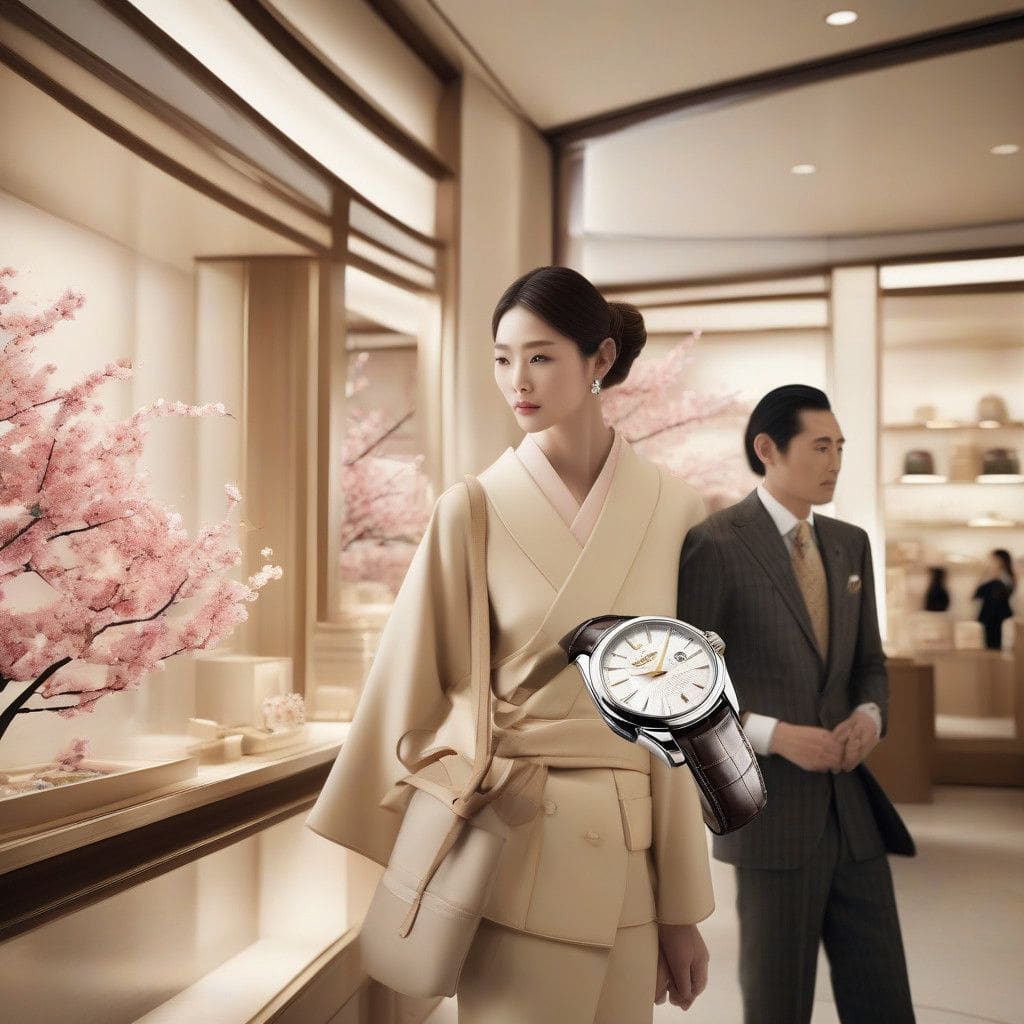As global travel returns and tourism surges, Japan has seen a remarkable influx of shoppers eager to take advantage of its luxury offerings and the weaker yen. Among these consumers is a growing appreciation for high-end watches, particularly from the Seiko Group’s premium brand, Grand Seiko. This Japanese watchmaker, often dubbed the “Japanese Rolex,” is poised to expand significantly within the luxury market despite a challenging landscape for Swiss counterparts.
In stark contrast to the struggles faced by the Swiss watch industry, which reported an average volume drop of 10% and a 2.5% dip in value in the first nine months of 2024, Seiko Group has enjoyed a robust increase in sales. The company’s latest financial report revealed an impressive 18% rise in net sales for the quarter ending in June, culminating in a revenue of 49.9 billion yen (approximately $332.6 million).
Akio Naito, the president of Seiko Watch Corporation, which oversees both Seiko and Grand Seiko, attributed this success primarily to the soaring popularity of Grand Seiko. Since its international launch in 2010, this brand has captured the attention of affluent customers who admire its craftsmanship and unique designs inspired by the Japanese landscape. With retail prices ranging from approximately $2,200 to $365,000 for limited-edition pieces, Grand Seiko effectively positions itself within the luxury segment, appealing to a growing number of affluent consumers.
The uptick in sales can be traced back to strategic investments in distribution and marketing over the past few years. As Naito notes, “Grand Seiko’s recognition has increased tremendously over the past five, six years.” With around 450 points of sale outside Japan, the brand now boasts the world’s largest Grand Seiko boutique on Madison Avenue in New York, which opened its doors earlier this year.
The boost in tourism has substantially contributed to Grand Seiko’s growth. Within Japan, these tourist shoppers accounted for roughly 20% of domestic sales last year, with the majority coming from Americans and a rapid increase in Chinese visitors, who have surged by 300% from 2023 levels. Visitor statistics from JTB Tourism Research & Consulting Co show a steady rise in visitors from the U.S., increasing by 25% to 45% month-over-month.
While this success is commendable, Naito candidly acknowledged that surging domestic sales have presented challenges for Grand Seiko’s expansion in other Asian markets. He noted, “Consumers from neighbouring Asian countries come to purchase Grand Seiko in Japan. So all our Asian subsidiaries are actually suffering.” Despite this, the impressive domestic performance has largely compensated for regional sales dips.
Outside Japan, Grand Seiko has not been entirely insulated from the luxury downturn affecting other markets. Naito confirmed that sales in the U.S. and Europe slightly declined in 2023 and that this trend seems poised to continue. “In these regions, Grand Seiko is not increasing revenues,” he stated. This enduring challenge underscores the brand’s need to enhance its visibility and status among luxury consumers globally.
The appeal of Grand Seiko extends beyond its beautiful watches; it relies heavily on the rich heritage embedded in its designs. The recent revival of the Grand Seiko 45GS, an homage to the company’s first automatic watch from 1968, highlights the growing trend for neo-vintage pieces in the luxury market. Naito is optimistic, emphasizing how Grand Seiko’s legacy and innovation allow the brand to navigate present challenges effectively.
Consumer confusion, however, remains a hurdle for Grand Seiko. Many points of sale still mix Grand Seiko watches with the more affordable Seiko line, leading to misperceptions about brand positioning and value. Naito aims to rectify this by clearly separating the two lines over the next few years, which will be crucial for enhancing Grand Seiko’s appeal to luxury buyers.
Additionally, the brand recognizes the need to engage women more effectively. Historically, approximately 15% of Grand Seiko sales in Japan are attributed to female buyers, and this figure drops significantly outside of Japan. A commitment to invest in female-targeted product development and marketing efforts is seen as critical to tapping into this demographic.
Meanwhile, Seiko’s global strategy highlights its cautious approach to pricing amidst currency fluctuations. Unlike several Swiss brands that have raised prices, Seiko plans to maintain stable pricing to remain competitive. Naito remarked, “Frequent price increases are one of the reasons they are losing sales,” pointing to a more favorable positioning for consumers looking for value amidst a luxury shopping spree.
The recent Japanese political climate, characterized by instability and potential currency fluctuations, adds further complexity to the luxury market. However, many analysts predict that the perception of Japan as a high-quality yet affordable shopping destination will likely persist, continuing to attract both local and foreign shoppers.
As the luxury watch market continues to mutate, Grand Seiko is set to leverage its unique advantages such as heritage, craftsmanship, and increased brand visibility to capture greater market share. Naito’s ambition to double Grand Seiko’s revenues in the next five years might well be within reach, depending on their ability to navigate both regional challenges and global market shifts. The brand’s growing recognition among tourists in Japan is a promising indicator that Grand Seiko’s luxury offerings are finally receiving the attention they deserve.












